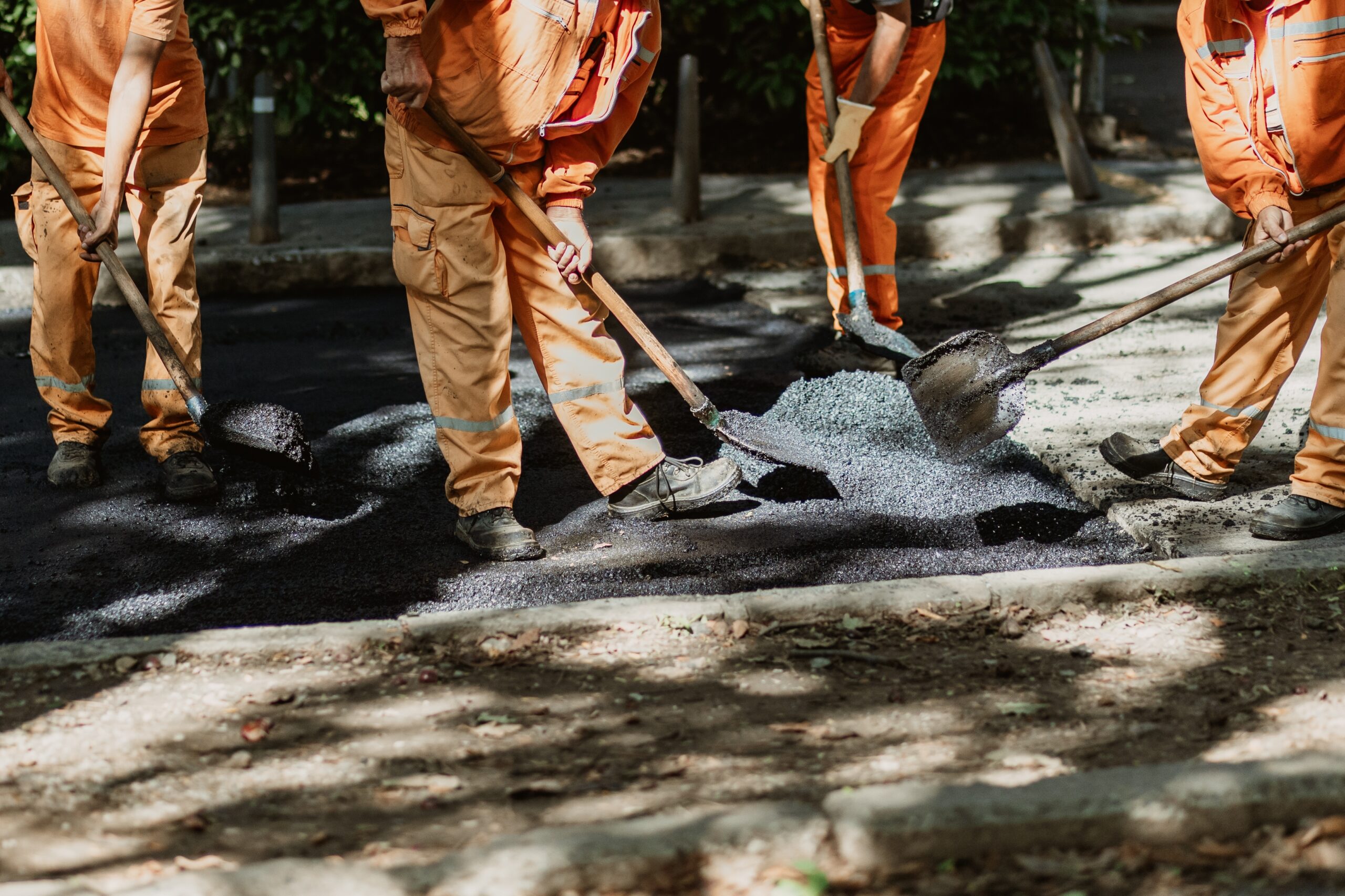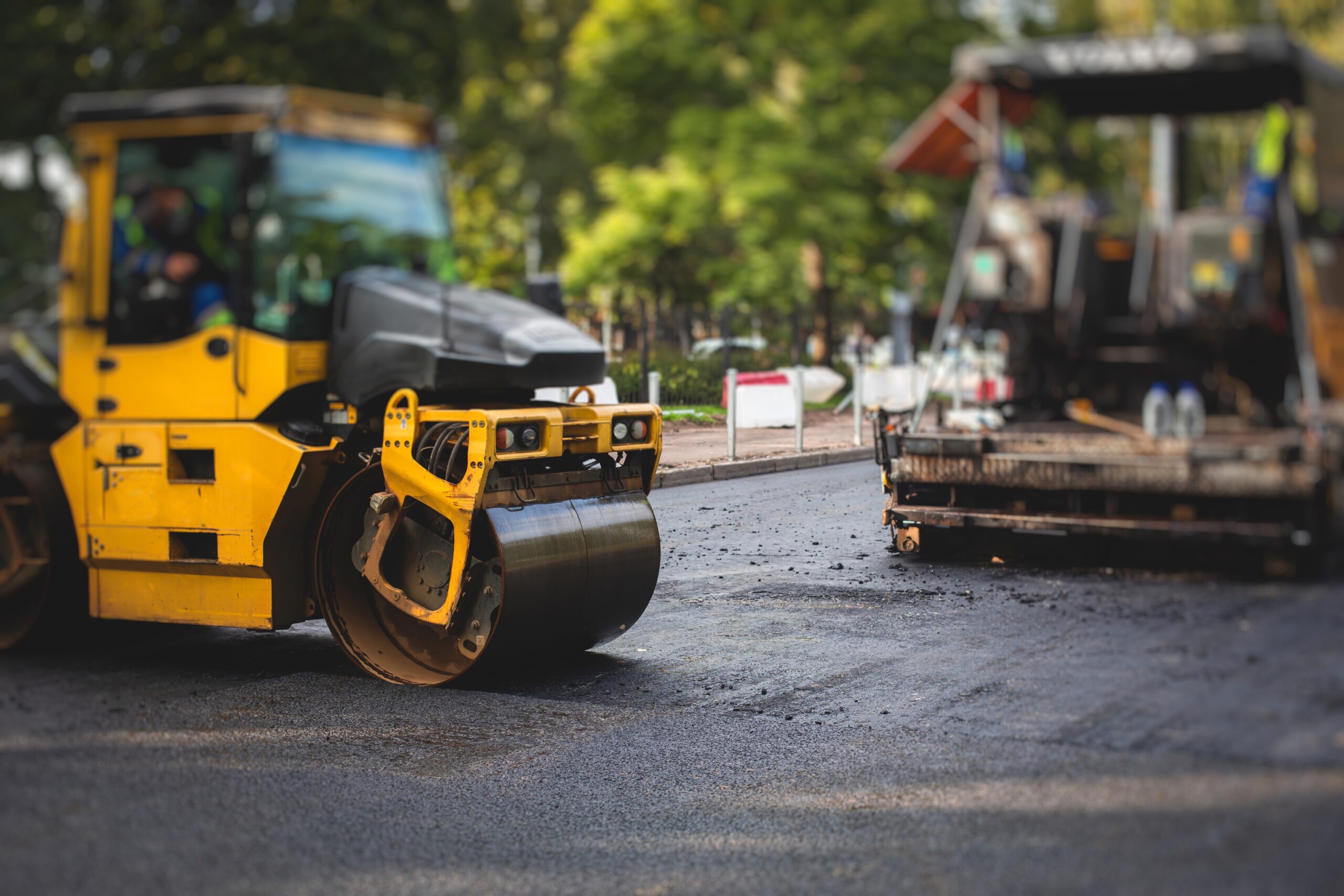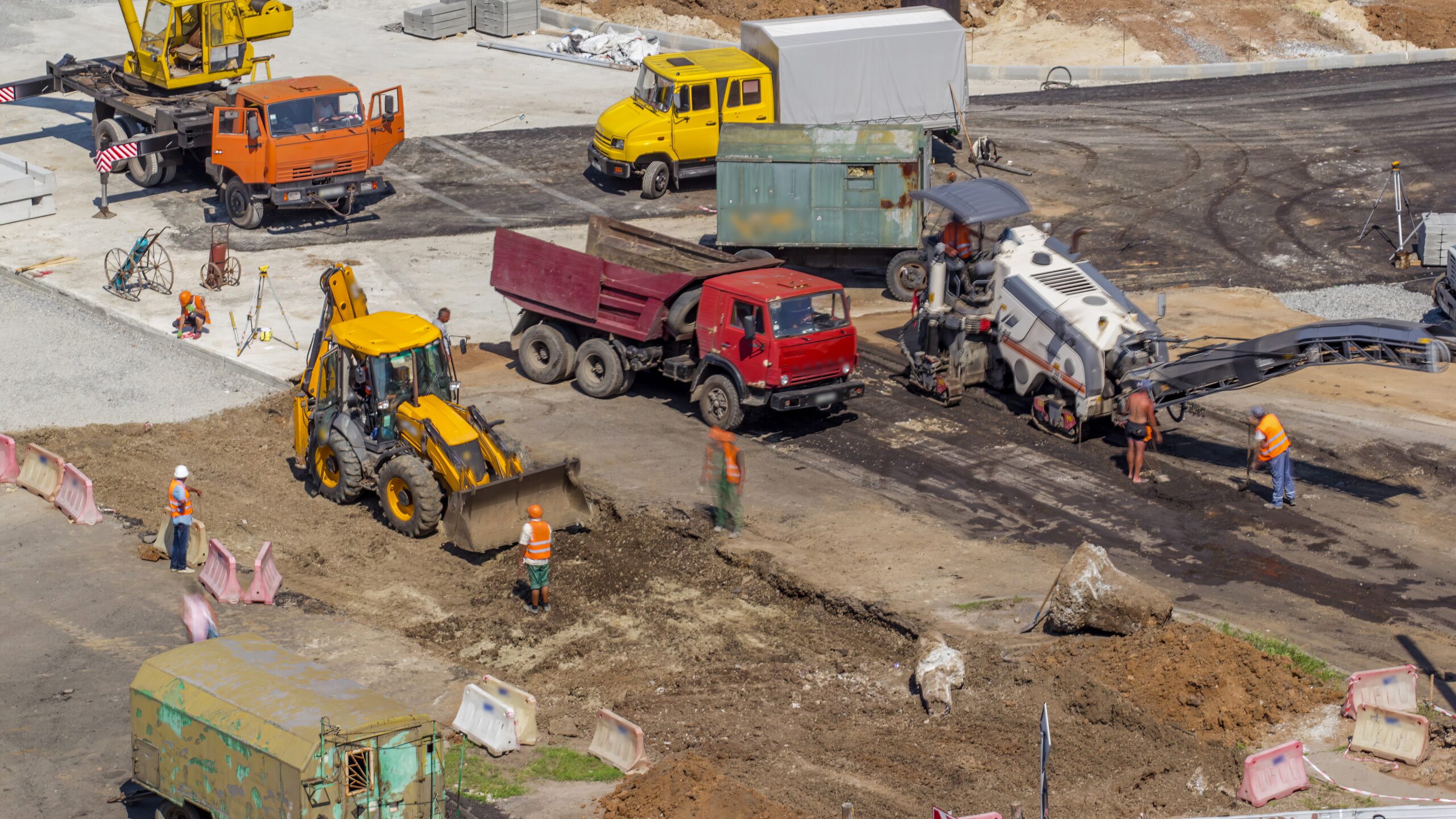Every parking area is more than just a collection of spaces. For property managers, business owners, and visitors alike, those painted lines help create order, enhance safety, and guide vehicles exactly where they need to go.
But not every space is created equal. Emergencies require clear fire lanes, daily business operations depend on efficient loading zones, and the growth of electric vehicles creates a new need for dedicated EV parking spaces. According to the International Council on Clean Transportation, more than 1.56 million EVs were sold in the U.S. in 2024, representing about 10% of new car sales. That growth means striping for EV spaces is no longer just fresh paint; it’s a matter of compliance and future readiness.
In other words, striping for these special zones is not just about applying fresh paint. It’s about making sure your property remains safe, fully compliant, and always ready to serve everyone who pulls in.
Understanding Special Zone Striping
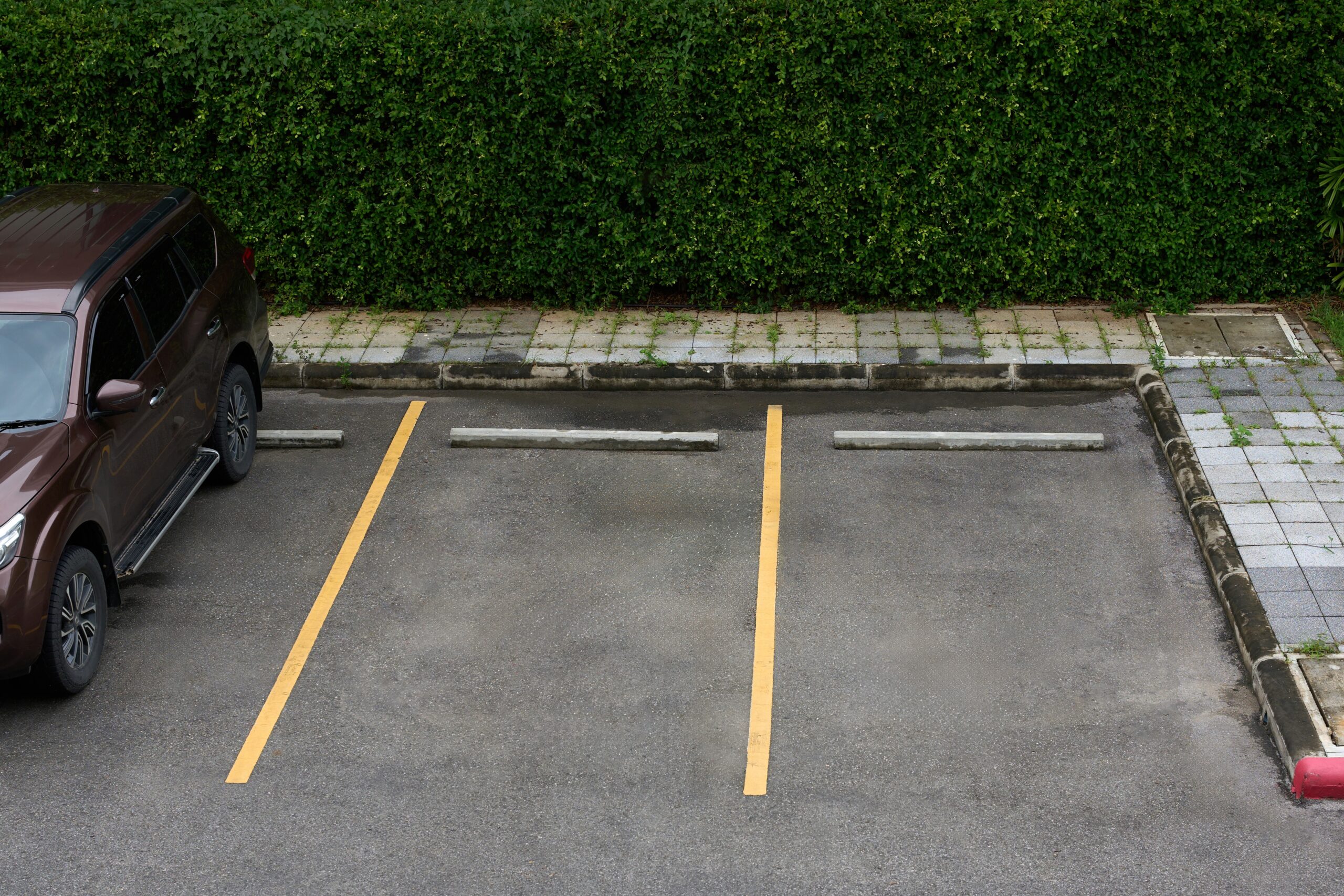
Striping for fire lanes, loading zones, and EV spaces is a specialized task that goes far beyond the basics of regular parking stall lines. These areas require thoughtful planning, careful execution, and a focus on safety and compliance.
According to the International Fire Code, fire lanes must remain unobstructed and clearly marked; the 2010 ADA Standards for Accessible Design set the required dimensions and signage for accessible parking; and the Federal Highway Administration’s Manual on Uniform Traffic Control Devices specifies pavement marking standards, including rules on retroreflectivity maintenance.
- Fire lanes must be designed for unobstructed emergency vehicle access.
- Loading zones are strategically organized to facilitate smooth deliveries and prevent traffic congestion.
- EV spaces demand specific layouts for accessibility and future expansion.
- Local and federal guidelines for safety and functionality regulate each special zone.
- Properly marked zones help with emergency response, keep operations flowing, and demonstrate the attention to detail your customers expect.
Why are different zones in my parking lot marked in different colors and styles?
Every color and marking serves a distinct purpose, based on both legal and safety requirements. Red is for fire lanes to ensure emergency access, yellow is for loading zones to direct delivery vehicles, and green or blue is for EV and accessible spaces. These distinctions are essential for compliance and clear communication with drivers.
Safety, Compliance, and Business Sense
Proper striping for special zones is not just a matter of aesthetics; it is also a matter of safety. It has real, tangible benefits for your property’s safety, compliance, and overall image. Getting it right makes good business sense—and keeps you in line with local regulations.
The Real-World Impact of Clear Markings
Think about the role these stripes play in everyday life. Clear fire lanes ensure that emergency vehicles never face unnecessary delays. Well-marked loading zones keep deliveries flowing smoothly and prevent trucks from blocking main drive aisles. EV spaces with proper signage and markings send a message that your business is future-focused and welcoming to all customers.
According to the Federal Highway Administration, maintaining retroreflective pavement markings improves nighttime visibility and reduces crash risk, which highlights just how critical visible striping is for public safety.
Regulatory and Safety Compliance
Failing to properly stripe special zones exposes property owners to regulatory fines, legal liability, and a damaged reputation. Local fire codes, ADA requirements, and city ordinances all dictate how these zones must be marked. Routine inspections can lead to costly citations if your lot is out of compliance. More importantly, proper striping is a critical step in protecting lives and property. Whether you’re managing a shopping center, office park, or multifamily property, a safe and organized lot reflects your commitment to customer service and safety.
How can proper striping help protect my business from liability?
Correctly marked special zones reduce risks of accidents, delays for emergency responders, and non-compliance penalties. When your lot is clearly striped and maintained, it demonstrates proactive risk management and reduces your exposure to fines or lawsuits.
Fire Lanes: Standards and Best Practices
Fire lanes are among the most critical features of any parking lot. Strict codes and best practices govern their design and maintenance to ensure safety and accessibility.
- Minimum Clearance: Fire lanes typically require at least 20 feet of clear width.
- Red Curb Paint: This is the universally recognized signal for “No Parking.”
- Clear Stenciling: “FIRE LANE – NO PARKING” must be visible in bold, reflective paint. According to the International Fire Code (IFC §503.3), designated fire lanes must be clearly marked with stenciled text such as ‘FIRE LANE – NO PARKING,’ applied in durable, reflective paint for visibility.
- Signage Spacing: Signs are placed at regular intervals to maintain visibility. According to local fire code amendments, such as Bellevue, Washington’s adoption of the International Fire Code, signs must be posted at intervals of 150 feet or less to maintain clear visibility and enforceability.
- Inspection Ready: Local fire marshals inspect and approve these areas for code compliance.
- Reflective Markings: Enhance nighttime and poor-weather visibility.
Who is responsible for ensuring my property’s fire lanes are up to code?
The property owner/manager. A qualified contractor will apply local code details, but ultimate responsibility sits with management. For execution milestones and QA, use a step-by-step line striping process to keep everyone aligned.
Loading Zones: Practical Planning
Every business relies on the smooth flow of goods and services, and loading zones play a crucial role in facilitating this process. Proper planning and execution are essential to creating loading zones that effectively serve your property.
What Makes a Great Loading Zone?
According to the San Francisco Municipal Transportation Agency’s Color Curb Program, yellow curbs designate active loading zones, making them easy to spot along with clearly stenciled “LOADING ZONE” text. Placement is just as important as appearance. According to the Institute of Transportation Engineers’ Curbside Management Practitioners Guide, well-designed loading areas should be located near building entrances, service doors, or freight elevators to minimize delivery distances. Timed usage is another practical consideration, allowing for maximum flexibility.
The Los Angeles Department of Transportation notes that yellow zones are often limited to 30 minutes during posted hours, balancing delivery needs with customer parking. When designed well, these areas help control curbside activity and keep main travel lanes open for other vehicles.
Managing Traffic and Access
Traffic coordination is essential in busy commercial properties. Properly marked loading zones ensure delivery vehicles do not interfere with daily traffic flow. The right combination of curb paint, signage, and stenciled instructions keeps everyone moving efficiently. For larger properties, designated loading areas can be managed through permits or access control systems, reducing the risk of unauthorized vehicles occupying the space.
Can loading zones be used for customer parking outside of delivery hours?
In many cases, loading zones can be repurposed for customer parking during off-peak delivery hours, provided local regulations permit it and signage clearly indicates usage times. Always verify with city ordinances and consult your striping contractor for guidance.
EV Spaces: Designing with the Future in Mind
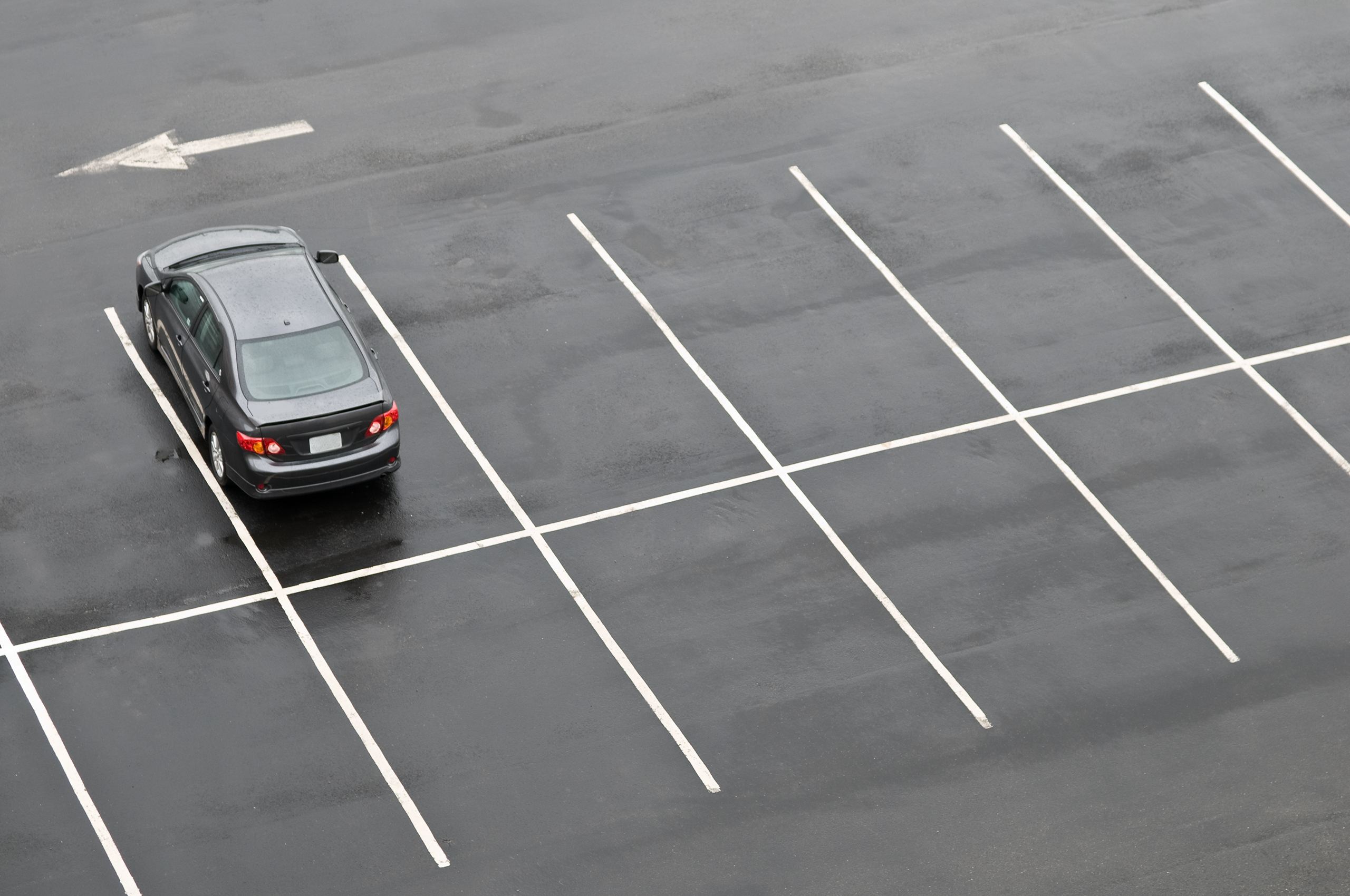
The adoption of electric vehicles is changing how parking lots are designed. Creating accessible, clear, and future-ready EV parking spaces is now an essential part of property planning.
- Distinctive Colors: EV spaces often use green or blue striping with EV symbols.
- ADA Accessibility: At least one EV space per lot should be ADA compliant, with appropriate width and access aisles. According to the 2010 ADA Standards for Accessible Design (§502), at least one EV space per lot must be ADA compliant, requiring a car space width of 96 inches and a van-accessible space of either 132 inches or 96 inches with a 96-inch access aisle.
- Bold Signage: Clear signs indicate EV charging and usage restrictions.
- Charging Station Protection: Concrete wheel stops or bollards can protect charging equipment.
- Scalable Layouts: Plan for expansion as demand for EV charging increases.
- Flexible Placement: EV spaces should be easily accessible and conveniently located near building entrances. According to the U.S. Access Board’s technical guidance and its 2024 proposed rule, EV charging stations must also provide accessible routes, operable parts within reach ranges, and clear space for maneuvering.
How do I determine if my property has sufficient EV spaces to meet current and future needs?
A professional assessment can evaluate your current demand, code requirements, and potential for future growth. Many municipalities are beginning to mandate minimum numbers of EV spaces, so planning for expansion is wise to stay ahead of both regulations and customer expectations.
Color Coding and MUTCD Alignment
The use of color and compliance with the Manual on Uniform Traffic Control Devices (MUTCD) creates consistency and clarity in parking lot striping.
Using Colors to Convey the Right Message
Different colors have universal meanings in parking lots:
- Red is reserved for fire lanes
- Yellow signals loading zones
- Blue denotes ADA and sometimes EV spaces
Beyond color, reflective and durable paint enhances visibility at night and in adverse weather conditions. Following MUTCD and ADA standards ensures that your property is both compliant and accessible to users. According to the Federal Highway Administration’s Manual on Uniform Traffic Control Devices (11th Edition, Part 3), pavement markings must use durable, retroreflective materials to ensure visibility in all conditions, and agencies are required to maintain minimum levels of retroreflectivity to remain compliant.
Why Standards Matter
Federal and state regulations set the tone for parking lot markings. Ensuring the right line width, color contrast, and symbol use not only prevents confusion but also shields your business from potential violations. With so much riding on color and clarity, professional contractors use top-quality materials and pay close attention to detail.
What happens if the colors of my parking lot don’t align with MUTCD standards?
Non-compliance can result in confusion, failed inspections, and possible fines. Always use the color codes and marking patterns outlined by MUTCD and local guidelines to maintain safety and compliance.
Materials for Durability
Parking lot striping is an investment, and the materials you choose determine how long your markings stay bright, visible, and safe.
- Standard Paint: Affordable and suitable for low-traffic areas.
- Thermoplastic Striping: Highly durable, perfect for high-traffic zones.
- Epoxy Coatings: Offer resistance to abrasion and UV rays.
- Reflective Glass Beads: Boost nighttime visibility.
- Weather Resistance: Materials should withstand Colorado’s intense sun, snow, and freeze-thaw cycles.
- Longevity: High-quality materials require less frequent repainting, resulting in time and cost savings.
According to performance research by the Washington State Department of Transportation and the Transportation Research Board, the retroreflectivity of pavement markings degrades over time, making material choice critical for long-term visibility. The Federal Highway Administration has also found that thermoplastic striping profiles improve wet-night visibility, providing an added safety benefit in adverse conditions
How can I tell if my striping needs higher-performance materials?
High-traffic areas, exposure to heavy weather, or locations requiring maximum visibility at night will benefit from upgraded striping materials. Your contractor can recommend the best options for your needs after a site assessment.
Inspecting and Maintaining Your Stripes
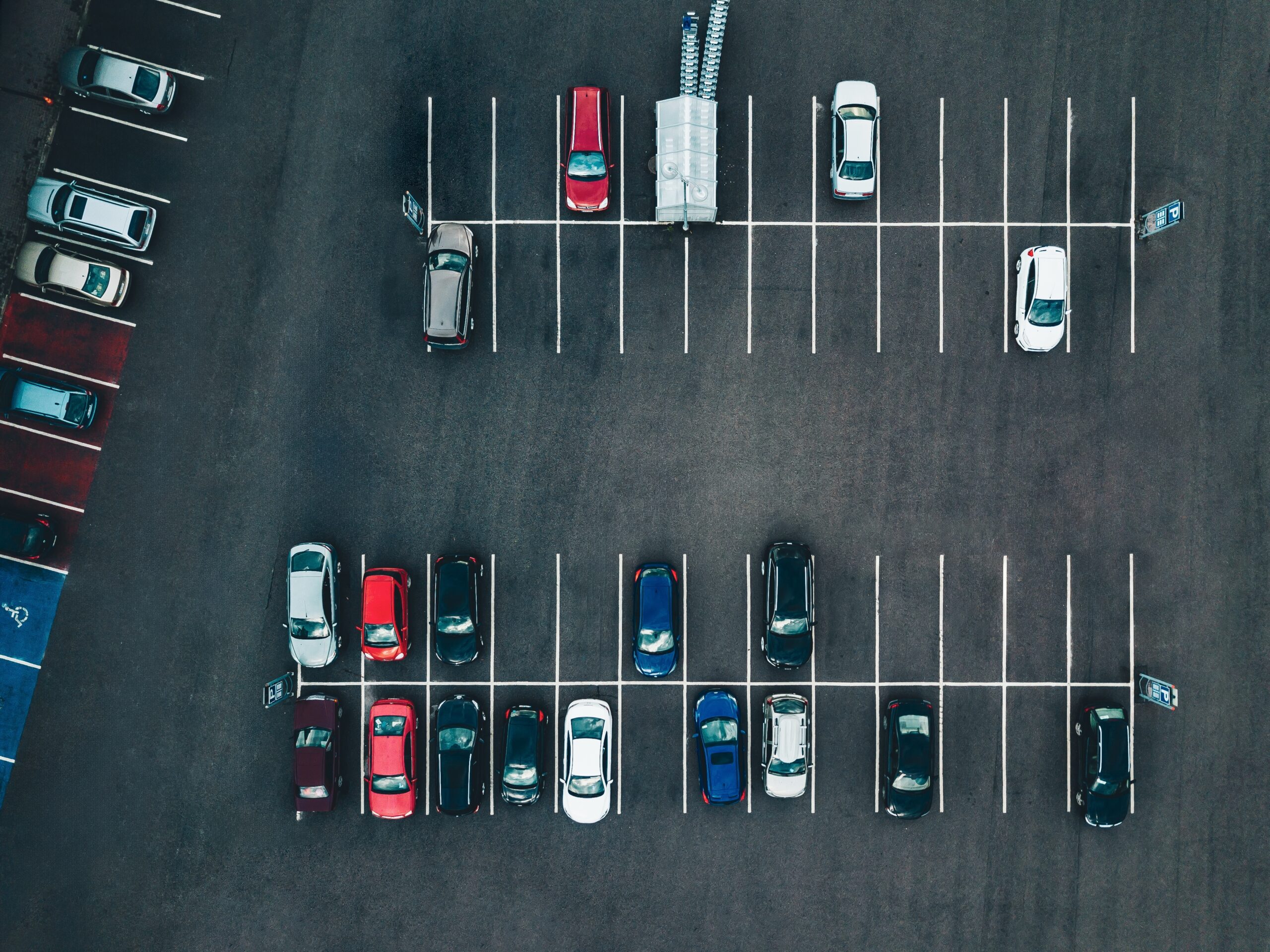
A freshly striped lot looks great, but regular maintenance is the key to keeping those markings visible and compliant year after year.
Keeping Your Markings in Top Shape
Routine inspections should be a part of every property manager’s maintenance schedule. Look for signs of fading, chipping, or wear, especially in high-traffic areas. Plan on restriping when lines start to lose their brightness or after any sealcoating project. Scheduling restriping alongside sealcoating saves time and ensures maximum bond between paint and asphalt.
Working with Your Contractor
A professional contractor will guide you through establishing a regular maintenance schedule. They can help coordinate work to minimize disruptions to your business and ensure your lot remains in compliance with all relevant codes. The result is a safer, more appealing property that’s always ready for customers, deliveries, and emergencies.
How often should I schedule inspections or restriping for special zones?
Annual inspections are standard, but some properties may require more frequent checks, especially after harsh weather or heavy use. Repainting should occur whenever visibility declines or after sealcoating has been applied.
Special Zone Striping Standards and Best Practices
| Special Zone | Standard Color | Typical Wording | Minimum Width | Key Compliance Feature | Maintenance Tip |
| Fire Lane | Red | FIRE LANE – NO PARKING | 20 feet | Reflective paint, regular signs | Annual inspection |
| Loading Zone | Yellow | LOADING ZONE | Varies | Timed usage, curb placement | Repaint every 1-2 years |
| EV Parking | Green/Blue | EV ONLY / CHARGING | 8-12 feet | ADA access, clear signage | Check after each winter |
Your Property, Your Reputation—Let’s Get It Right
There’s no substitute for a parking lot that’s well-planned, clearly marked, and prepared for any eventuality. Whether you’re updating fire lanes, planning new loading zones, or preparing for the future with EV spaces, Asphalt Coatings Company is here to help. Our experienced team understands the intricacies of Colorado striping standards and will work with you to design and maintain special zones that meet every requirement and exceed expectations.
Ready to improve your property’s safety, compliance, and curb appeal? Contact Asphalt Coatings Company today for a free inspection, personalized striping plan, and the kind of service that puts your needs first. Let’s make your parking lot the best it can be—safe, organized, and ready for tomorrow.
Frequently asked questions
How often should fire lanes be repainted?
Fire lanes should be inspected annually and repainted whenever markings fade below visibility standards. Typically, this means every 1-2 years, depending on your lot’s traffic volume and the weather conditions in Colorado.
Can EV spaces be combined with ADA parking?
Yes, EV spaces can be combined with ADA parking. However, you must follow ADA width and accessibility guidelines, ensuring there is clear, unobstructed access to EV chargers for all users.
What is the standard width for loading zones?
Loading zones typically range from 12 to 20 feet in width, depending on the types of delivery vehicles you expect and the available space on your property.
Are reflective paints necessary for all special zones?
Reflective paints are highly recommended, particularly for fire lanes and EV spaces. They significantly improve visibility at night and during inclement weather, helping to keep your lot safer and more compliant.
How do I ensure compliance with local fire codes?
To stay compliant, consult your local fire marshal, follow NFPA standards, and hire professional striping contractors who are familiar with local fire codes and inspection requirements.

